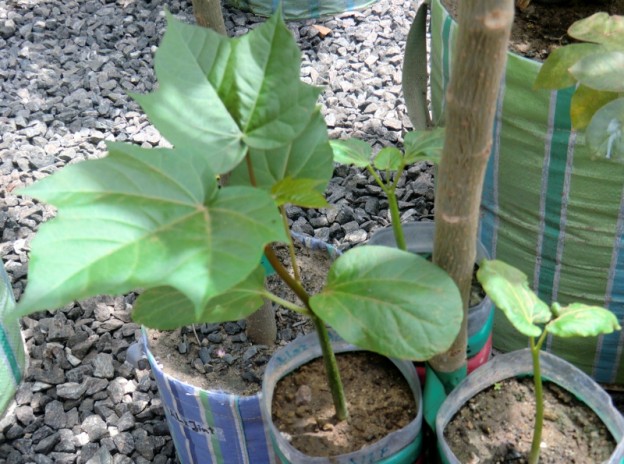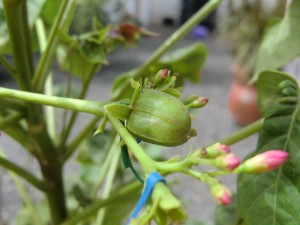In the second half of August we successfully germinated the first three F2 generation seedlings from one of our interspecific hybrids. From now on we have fast growing F2 Jatropha interspecific hybrids for further breeding. While some research reports indicate that this type of interspecific hybrid is sterile or not interesting for breeding, we observe ongoing successful seed development on several of our early F1 plants deriving from different Jatropha curcas female parents. So we expect more additions to this F2 generation population in the near future.
As expected from applying simple Mendelian rules the F2 generation phenotypically exhibits much more diversity than the F1 generation.
All of the 3 seedlings we have so far appear strong and healthy. However, only the one on the left hand side seems to be as fast developing as expected while the other 2 are only moving along slowly.
We expect our F2 interspecific population to grow very fast over the coming months involving many different F1 interspecific parents with genetically very different Jatropha curcas parents in turn. Currently many F1s are initiating their first flowering. On the interspecific route of our breeding program this is really what we have worked on for almost 3 years. We have clearly begun moving into terrain which has not previously discussed in the scientific literature to the best of our knowledge.
This development marks another success in achieving our initial target to bring as much variability into the germplasm available to our Jatropha breeding platform for future improvements through selection. We are now able to start work on a real ground breaking next step we had been planning for since we did the first interspecific cross almost 2 years ago. With a little luck first results will become visible before the end of the year.
Further observations on the interspecific breeding route will be published here as much as possible, but of course we will have to start protecting our intellectual property where we reach the forefront of commercial hybrid development as we are expecting a meaningful patent application before too long.


